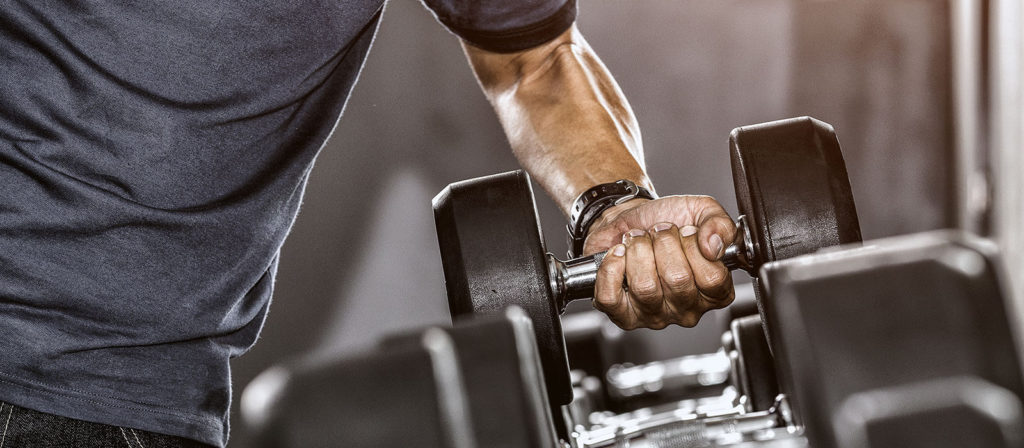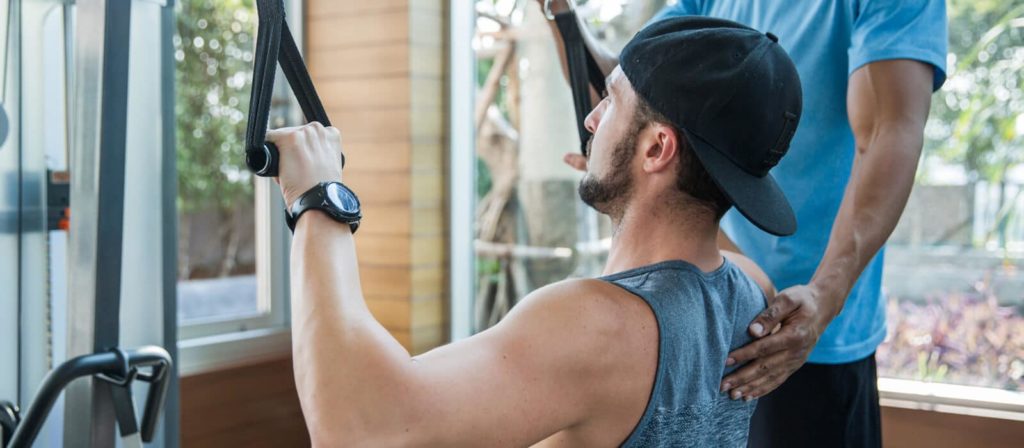It’s human nature to want to perform the exercises you’re good at. If you’re great at dips, you’ll be more inclined to do them. If you struggle with pull-ups, you might prefer the lat pulldown as your vertical pulling exercise.
Your body functions more efficiently (and is less injury-prone) when the strength between its antagonist muscles is properly balanced. Unfortunately, many people overdo the exercises they excel at and neglect to exercise other parts of their bodies.
Skipping an exercise because of physical limitations or pain is understandable. But it’s less excusable to avoid an exercise because it’s challenging or you think it makes you look weak.
One of the most common examples of this is emphasizing the chest, anterior shoulders, and triceps with the bench press while minimizing rows and pull-ups, which work the lats, rhomboids, and rear delts. Such muscular imbalance can impact shoulder stability and result in pain, injury, and a lack of performance.
Adaptation is another important reason to balance your training. Your progress plateaus when your body gets used to the amount of stress you place on it. The longer you train, the faster adaptation will happen, making variety in training even more important as you advance.
Whether you’re making a big change to your routine, like incorporating a brand-new exercise, or a small change, such as changing the tempo of an exercise (i.e., a 10-second eccentric phase), the key is to stay with a stimulus long enough to progress, but not long enough to become stagnant.
7 Exercises to Work Into Your Training
Well-rounded strength, mobility, and physical symmetry come from performing a wide variety of exercises, so identify those that need improvement to increase the variety of your training. Performed correctly, these seven exercises can give your body the balance it needs:
1. Glute-Ham Raise
The glute-ham raise (GHR) is one of the few exercises that works the hamstring from its origin to its insertion point. The three hamstring muscles are often undertrained, and the GHR might be the most effective exercise for building their strength.
2. Face Pulls
The vast majority of trainees devote far more time to training their chests than their backs. Face pulls target the rhomboids in the upper back — a difficult area to target with other exercises — and improving the lift can do wonders for your shoulder health.
3. Tibia Dorsi Flexion
The tibialis anterior muscles that run along the shin are almost always weaker than their antagonist calf muscles, and this imbalance often leads to shin splints and foot problems. The tibia dorsi flexion machine also improves ankle mobility, which is a frequent issue with both athletes and the general population as it ages.
4. Good Mornings
This old-school exercise has fallen out of favor because many people feel it could be dangerous. However, executed with proper form, there’s no better exercise for working the entire posterior (hamstrings, glutes, and lower back). Remember to push your hips back. If you round your back, then you’ve either gone too low or put too much weight on the bar.
5. Weighted Carries
It’s important to train the abdominals in a manner that best replicates how you use them every day. One of the abs’ main roles is to resist rotation, so they statically contract. Crunches build some strength endurance in the upper abs, but they also cause the abs to shorten, which is not a good thing.
Performing a variety of weighted carries teaches all of the abdominal muscles to work effectively with other core muscles, building real strength while keeping the lower back healthy.
6. Shortened Position Pulling
This pulling exercise gets more difficult as your hands come closer to your midline, which your body and nervous system are probably not used to. Most pulling exercises are more difficult at the movement’s initiation and get easier toward the end, when the lats are at their shortest.
Changing the strength curve engages your lats better and makes you stronger at that specific angle. The newly acquired strength will carry over to all pulling exercises.
7. Backward Sled Pull
Quad dominance (significantly greater quad strength than hamstring strength) is a common muscle imbalance. However, imbalances can also occur within the same muscle group. For some people, the outside quad (vastus lateralis) is often larger and stronger than the inner quad (vastus medialis).
When this happens, you may experience patella tracking issues and be more prone to ligament tears. The backward sled pull specifically targets the vastus medialis to ensure balanced quad development.
There’s no holy grail of perfect exercises. But the best exercises may be ones you aren’t yet incorporating in your workouts. The only way to reach and exceed your fitness goals is to edge outside your comfort zone and make sure your muscle strength is properly balanced.






